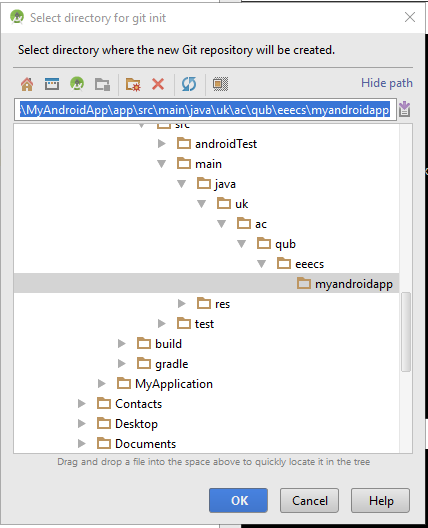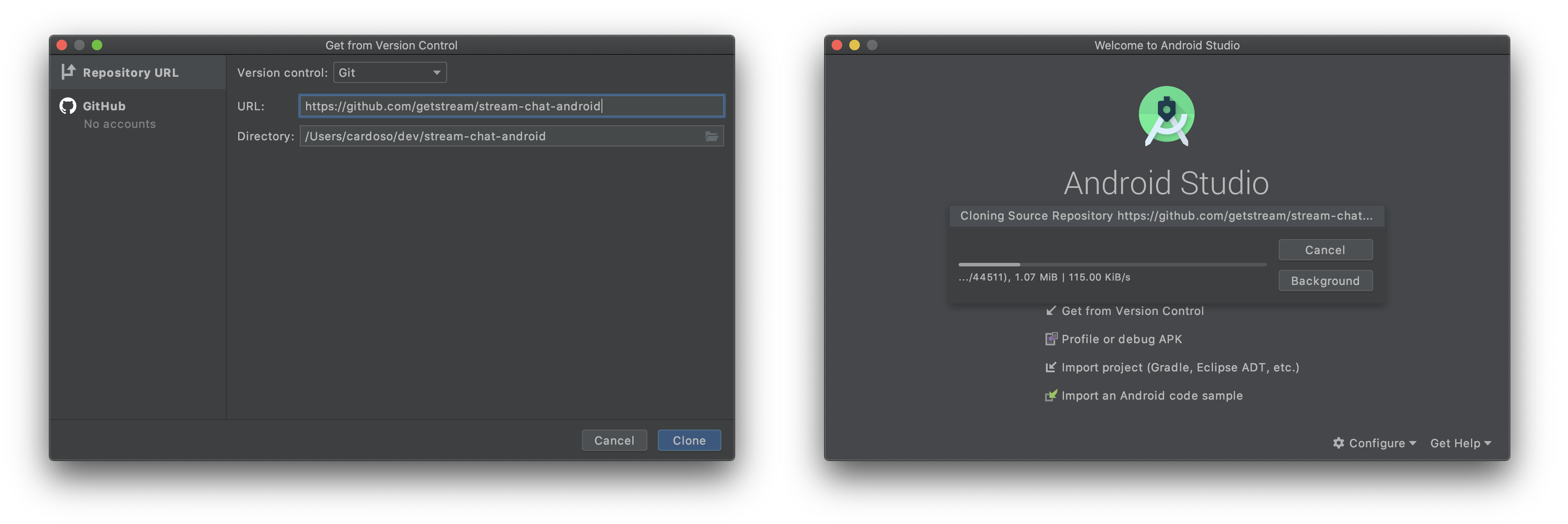

- #PUSH CHANGES USING GIT ANDROID STUDIO PLUGIN UPDATE#
- #PUSH CHANGES USING GIT ANDROID STUDIO PLUGIN CODE#
Run tool: select the external tool that you want IntelliJ IDEA to launch after the selected changes have been committed. In the After Commit area, you can select the server access configuration or a server group to use for uploading the committed files to a local or remote host, a mounted disk, or a directory.
#PUSH CHANGES USING GIT ANDROID STUDIO PLUGIN UPDATE#
Update copyright: add or update a copyright notice according to the selected copyright profile - scope combination. Click Choose configuration near Run Tests and select which configuration you want to run. Run Tests: run tests as pre-commit checks. Click Choose profile to select a profile from which the IDE will run inspections.
#PUSH CHANGES USING GIT ANDROID STUDIO PLUGIN CODE#
Click Configure to choose an existing TODO filter, or open the TODO settings page and define a new filter to be applied.Ĭleanup: batch-apply quick-fixes from code cleanup inspections. Click Choose profile to select an inspection profile from which the IDE will run inspections.Ĭheck TODO (): Review the TODO items matching the specified filter. Optimize imports: remove redundant import statements.Īnalyze code: analyze modified files before committing them. Rearrange code: rearrange your code according to the arrangement rules preferences. Reformat code: perform code formatting according to the Project Code Style settings. In the Before Commit area, select the actions you want IntelliJ IDEA to perform before committing the selected files to the local repository. When this option is enabled, the following line is automatically added at the end of the commit message: Signed off by:

Sign-off commit: select if you want to sign off your commit to certify that the changes you are about to check in have been made by you, or that you take the responsibility for the code you're committing. If you need to perform pre-commit checks, upload files to a server after the commit, or commit with advanced options, click :Īuthor: if you are committing changes made by another person, you can specify the author of these changes. txt file and execute the following command in the terminal to add it to your Git config: git config -local commit.template Specify the boilerplate text you want to use in a. You can also define a commit template that will be used as the default commit message. There is also a quick-fix and the Reformat action that wrap a long line or reformat the message. You can customize commit message rules on the Version Control | Commit page of the IDE settings Ctrl+Alt+S. You can also edit the commit message later before you've pushed the commit. You can click to choose from the list of recent commit messages. If you want to append local changes to the latest commit instead of creating a separate commit, select the Amend option.Įnter the commit message. You can also select files under the Unversioned Files node - IntelliJ IDEA will stage and commit these files in one step. If you press Ctrl+K, the entire active changelist will be selected. Open the vertical Commit tool window Alt+0 located on the left:Īs your changes are ready to be committed, select the corresponding files or an entire changelist.

To set a name for a single repository, use $ git config user.name "John Smith" To set a name for every Git repository on your machine, use $ git config -global user.name "John Smith" Open the Terminal and execute one of the following commands: If you have not set your username, IntelliJ IDEA will prompt you to specify it when you first attempt to commit changes. Git needs to know your username to associate commits with an identity. This involves committing them locally to record the snapshot of your repository to the project history, and then pushing them to the remote repository so that they become available to others. Commit and push changes to Git repositoryĪfter you've added new files to the Git repository, or modified files that are already under Git version control and you are happy with their current state, you can share the results of your work.


 0 kommentar(er)
0 kommentar(er)
